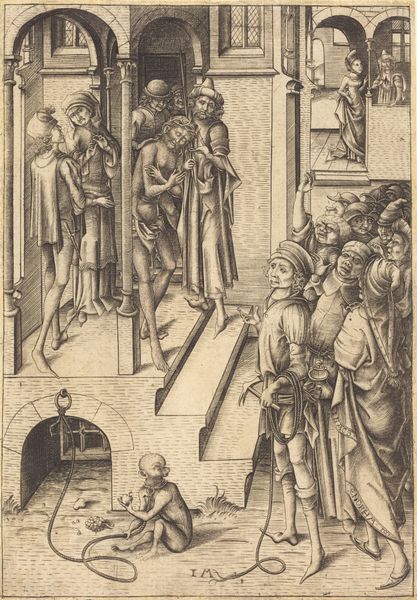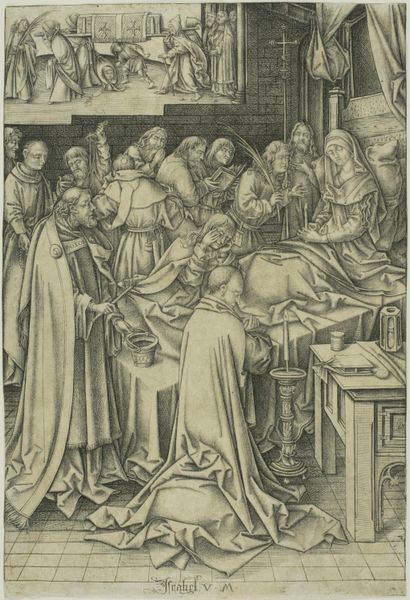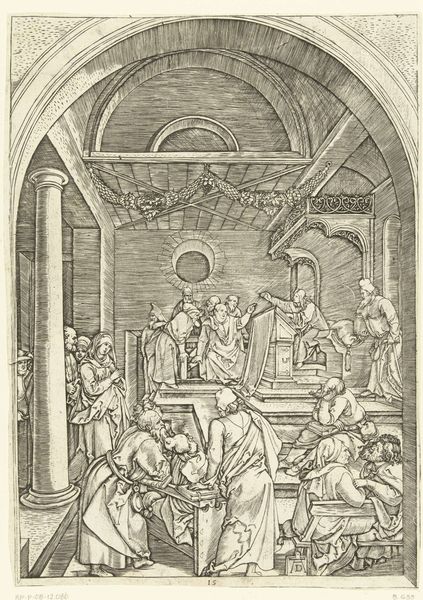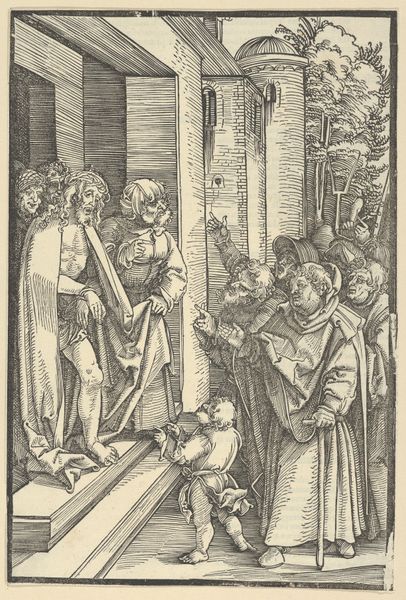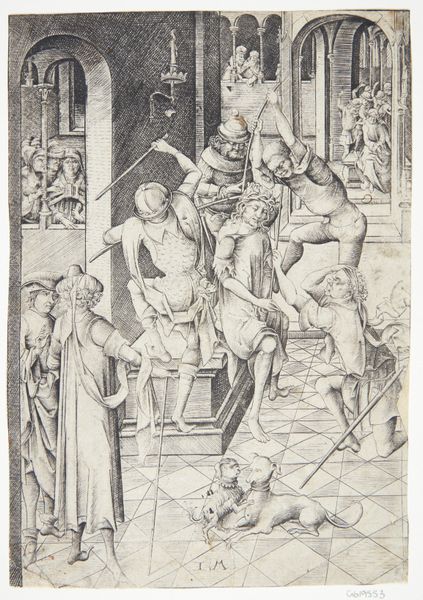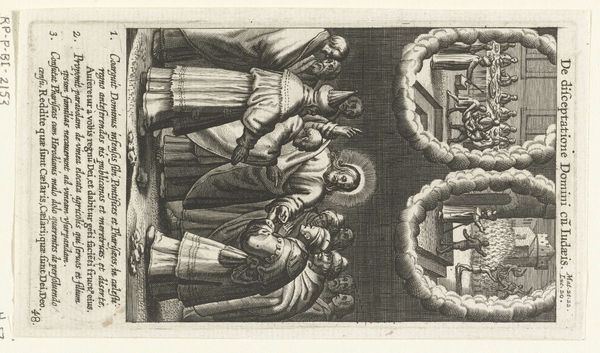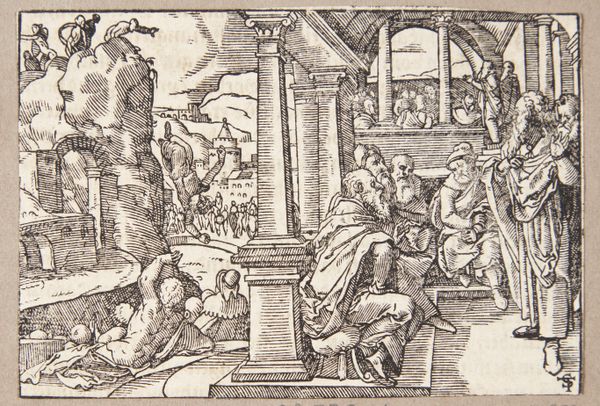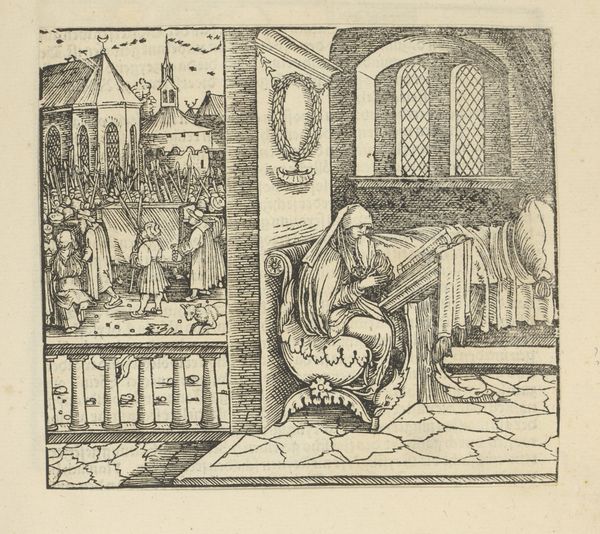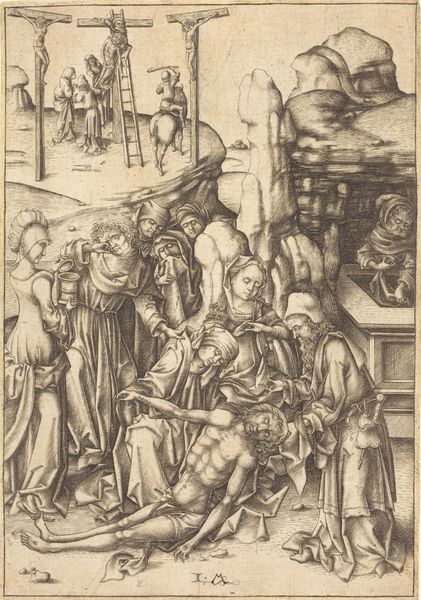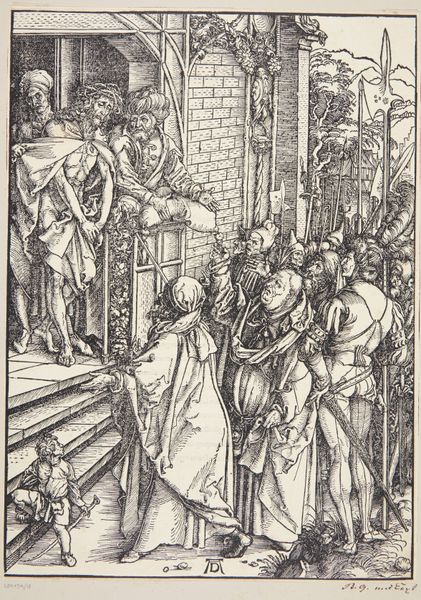
tempera, painting
#
narrative-art
#
tempera
#
painting
#
figuration
#
oil painting
#
history-painting
#
italian-renaissance
#
early-renaissance
Copyright: Public domain
Curator: This is a detail from Cennino Cennini's "Natività di Maria," created around 1410. Cennini employed tempera on panel for this piece, a common technique of the Early Renaissance. Editor: The first thing that strikes me is the composition. It's a collection of interior spaces seen in layers; a really striking combination of muted and vivid colors draws the eye across these depths. Curator: Indeed. Tempera demanded a specific preparation of the ground and careful layering of pigments. Understanding that labor and those material choices situates us within the established practices and workshops of Florence at that time. These paintings weren’t churned out, but crafted deliberately. Editor: You're right, there's a pre-industrial, handcrafted sensibility that speaks to value being equated with the slow and skilled labor. However, within that framework, the interplay between light and shadow, the symmetry of the architectural elements, and the gentle curve of the figures create a wonderfully balanced whole. Semiotics allow us to see beyond what is simply depicted to understanding that balanced form is an argument for spiritual grace. Curator: That focus on symmetry and internal harmony within the artwork definitely reflects larger cultural values around balance and order from that specific historical period. We shouldn't separate artistic production from socio-economic systems in this period of wealth redistribution and nascent banking industries in Italian city-states. Editor: Of course! And even these considerations underscore how a semiotic reading benefits from a nuanced formal analysis: for instance, looking at how the linear perspective operates and the way the Madonna is framed is to observe meaning created on multiple levels within the same picture. Curator: Well, seeing Cennini's "Natività di Maria" with these layers in mind – of labor, material and history— makes me consider how the conditions of production really infuse the art itself. Editor: For me, examining this artwork so closely reveals an intentional balance of visual elements expressing Early Renaissance humanism through line and tone and structure, encouraging reflection on our reading practices, too.
Comments
No comments
Be the first to comment and join the conversation on the ultimate creative platform.
